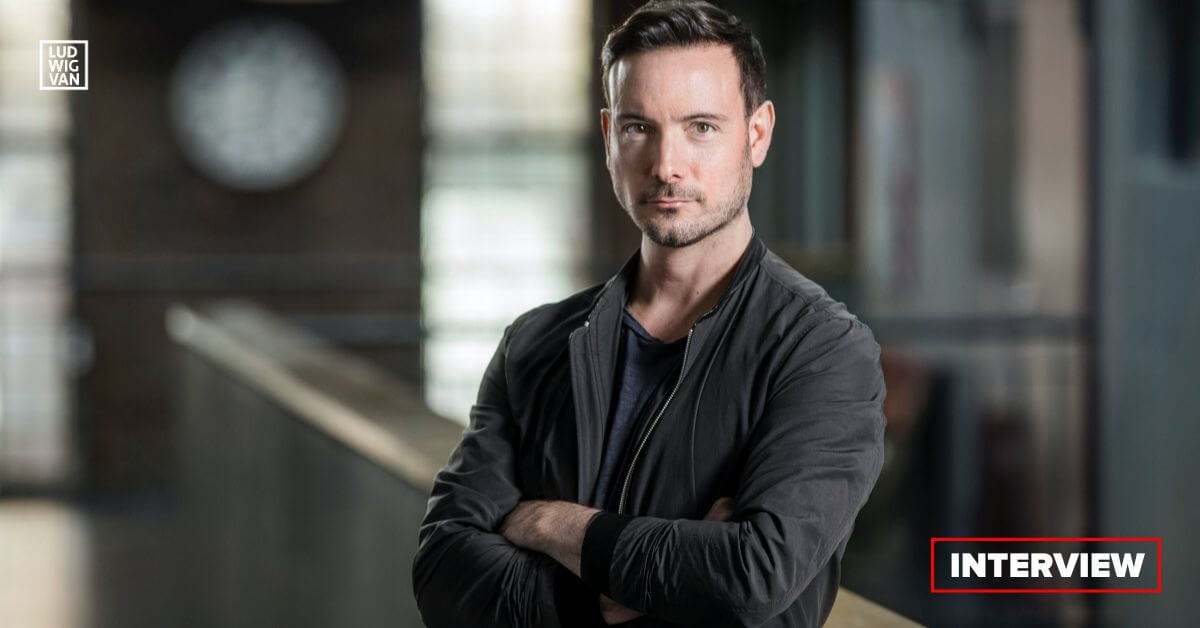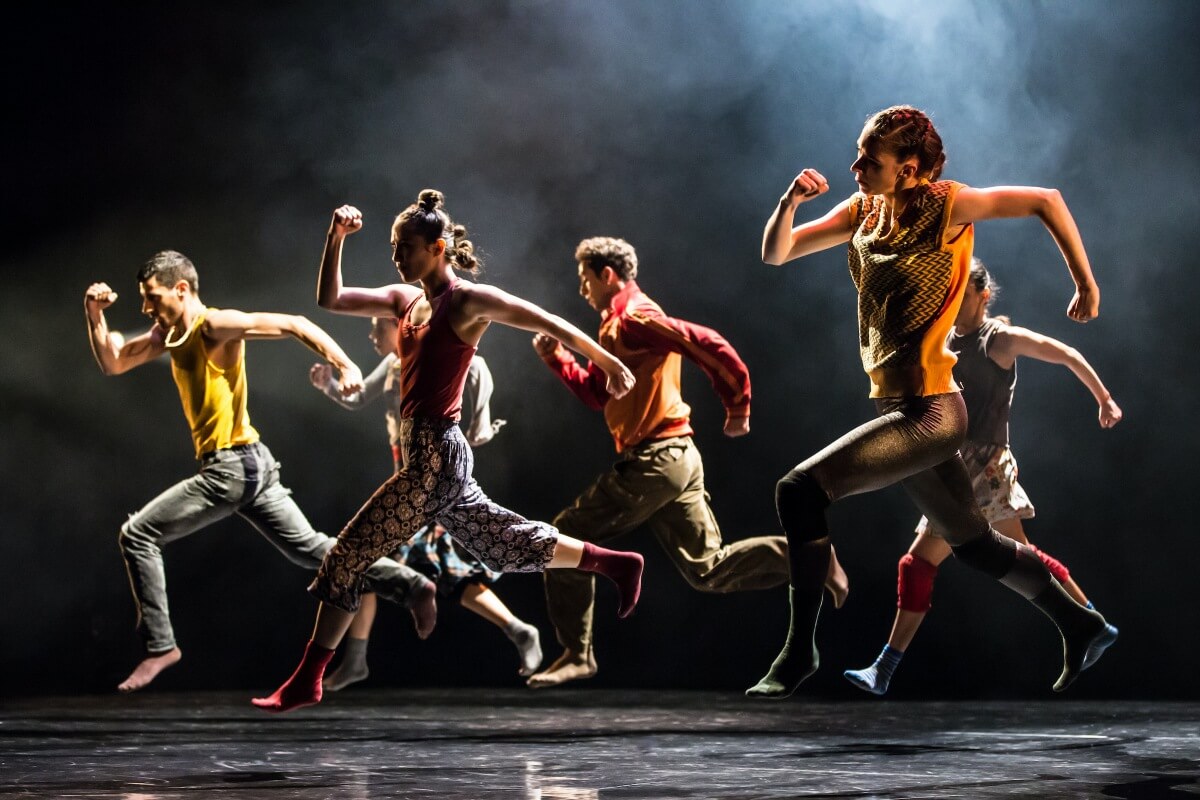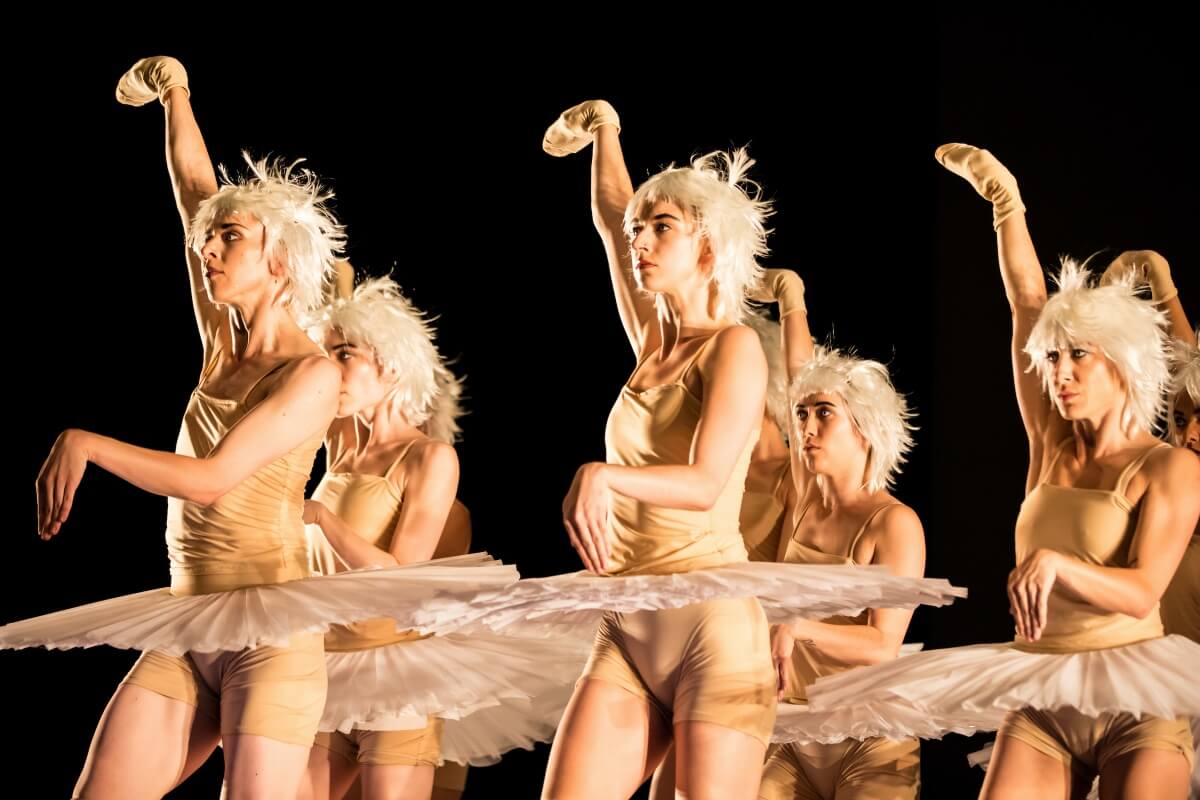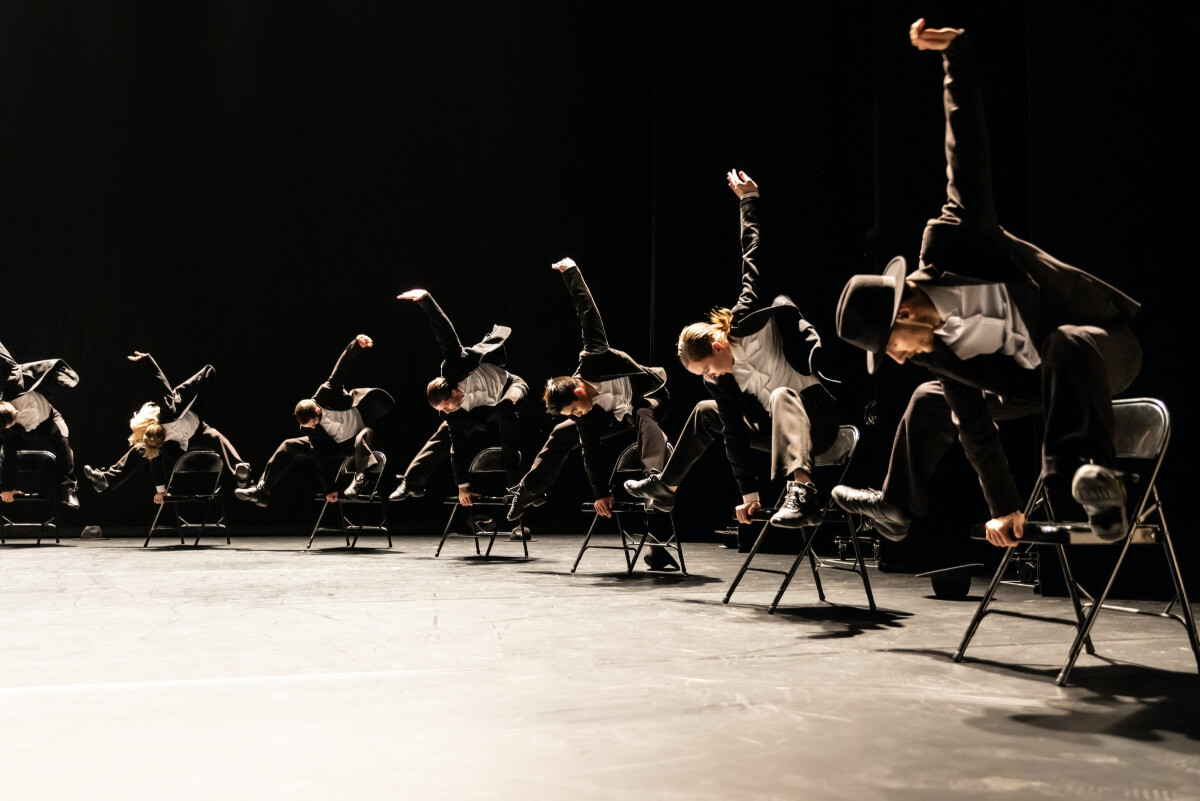
It’s a homecoming of sorts.
Eric Gauthier studied at Canada’s National Ballet School and then spent one year with the National Ballet before decamping to Germany where he has had a glittering career, first with Stuttgart Ballet, and then with his own company, the internationally acclaimed Gauthier Dance//Dance Company Theaterhaus Stuttgart.
When Gauthier Dance opens at Harbourfront’s Fleck Dance Theatre on Apr. 18 for a three day run, the program will feature three of today’s most acclaimed choreographers — Marie Chouinard, Hofesh Shechter and Ohad Naharin. It promises to be a rich evening of contemporary dance.
When I interviewed Gauthier by Zoom, he was driving on the Autobahn from Stuttgart to Munich, where he was going to rehearse the piece he had just created for the young company of Munich Ballet. One thing, however, became very clear during our candid conversation — the 47-year-old is a man of many talents.

Let’s go back to the beginning. You were born in Montréal. How did you get into dance?
My first dream was to be a goalie. I was always flexible, and could drop easily into the goalie splits, and then I saw the musical Cats, and I told my parents that that’s what I wanted to do. I was already playing the piano, so what I needed was to learn to dance.
I was sent to l’Ecole supérieure de ballet du Québec, and a teacher there told my parents that I had real talent, and that I should try for the National Ballet School, so I came to Toronto when I was 10.
I loved my years at the school, and to honour that, on Apr. 19, my company is giving a special performance for the students, followed by a master class. The program includes works by Nacho Duato, Alejandro Cerrudo, and myself. I’m also doing a workshop at the National Ballet.
Speaking of the National, you joined the company right after graduating from the ballet school.
When I was 17, I became an apprentice with the National Ballet with a promise of next year joining the corps de ballet. And then artistic director Reid Anderson announced he was taking over Stuttgart Ballet, and I asked him what about my corps contract, and he invited me to come with him. He took four big stars and me, a lowly apprentice. Reid has always been my special ballet dad.
I well remember that raid in 1996 that left the National reeling. You were with Stuttgart Ballet for 12 years. You got promoted to soloist, but never made principal. Why was that?
Reid told me that at 5’9, I wasn’t tall enough to be a prince, that I was more of a character dancer. On the other hand, I was always first cast for all the modern dance pieces.
I understand that you are also a singer-songwriter.
All the time I was dancing, I kept my sanity by playing in a band. At first we were called Royal Tease, and then we changed it to Eric Gauthier and His Band. I had some success as a songwriter. I even sold one to Melanie C of the Spice Girls.
When I was 26, I went to Reid and told him I wanted to move to London to become the new Mick Jagger. He told me to think it over and stay in dance, which I did.
Why did you leave Stuttgart Ballet?
At 30, dancers know that they are a ticking time bomb. The thing is to try and do something different before your body gives out entirely, so I thought about forming my own contemporary dance company.
Even if I wasn’t a principal dancer, I was still recognized in Stuttgart. Werner Schretzmeier, the director of Theaterhaus, knowing that I was popular, and that I wanted to start a company, offered to make it a resident company. And that’s how Gauthier Dance//Dance Company Theaterhaus Stuttgart was born in 2007, starting off with six dancers. We also got help from Luxembourg’s Grand Theatre which gave us $100,000 a year for three years.

When did you start to choreograph?
Sooner or later, most dancers try their hand at choreography. I created my first piece in 2005 when I was 27. The following year I made a solo for fellow Canadian dancer Jason Reilly for Stuttgart Ballet’s Young Choreographer Showcase. It was called Ballet 101, and it was such a success, that even today, it is always being performed somewhere in the world.
The work challenges the fact that there are only five positions in ballet, by creating 101 positions. From position 50 on, they are all jumps. The narration (which is my voice) creates the ballet by first demonstrating the positions in order, and then calling out the numbers at random. It’s a real tour de force for the dancer as the numbers come faster and faster.
Today, I have works in top companies in Russia, Holland, and here in Germany. I’ve also choreographed for music videos, showbiz events and film.
What exactly is Theaterhaus Stuttgart?
Different houses in Germany have different purposes. Some bring in shows, while others rely on rentals.
Theaterhaus is a cultural centre in a renovated old factory, with four stages, that presents theatre, music, dance, cabaret, comedy, literature and political discussions, among other things. The four stages seat 1000, 400, 300 and 100 people, respectively, and accommodate 900 shows a year, which attract an audience of over 300,000 people.
Werner, the director, is 80 and an old hippy. He and his wife run Theaterhaus like a labour of love. It’s the child they never had.
What does it mean being a resident company?
In fact, we’re unique in Germany, because we are an entity in a theatre, but not an official company of the state. We’re sort of private, so to speak, but we do have a home, so we don’t have to pay rent in order to perform.
Our annual budget is around $2.5 million. While we get about a third from Theaterhaus, and some funds from the city and the state, we have to raise the rest on our own, through performances, touring, sponsors and fundraising. We give 150 performances a year, and that includes 60 at home, and we tour more than any other German dance company. We’re spending three and a half weeks in Canada, for example. We’ve learned to take care of ourselves.
State companies, who get three times our funding, only pay back about a third of that through ticket sales. We pay back all the funding we get because we have 90% houses. That’s the true nature of art. As well, in a smaller company, each dancer becomes more relevant.
Stuttgart Ballet has 100 dancers. We have 16, but we have proven that you can have great success with few resources if you have passion and an idea.
Let’s talk about the works the company is performing at Harbourfront. The first two pieces, which form the first half of the program, you call Swan Lakes.
I always wanted a Swan Lake for my company. I had four choreographers in mind, but when I couldn’t decide who to choose, I commissioned all of them to create their version of Swan Lake in 2021. I gave them free rein. We’re bring two of them to Toronto — the pieces by Marie Chouinard and Hofesh Shechter. The other two choreographers were Cayetano Soto and Marco Goecke.
Tell me about Chouinard’s Le chant du cygne: Le lac.
Marie’s piece is for eight women. Just as swans are majestic creatures that we love to look at, so are women majestic creatures that we love to look at, only in this ballet, they realize they have something to say.
The dancers have a point shoes on their left foot and right hand. They have white contact lenses, white wigs and white costumes. In the middle of the piece, they realize that people are looking at them, and Marie then takes the dance to a whole new place. It is a work of visual art.
Toronto is our first stop on the tour, so Marie is coming to town to rehearse the piece because she hasn’t seen it in a while.
And Shechter’s Swan Cake?
It’s a very athletic piece for 11 dancers. The flamboyant choreography is matched by Hofesh’s own music score which is mind blowing. If the piece is about anything, it seems to be about birds flocking together. The point is, it’s 25 minutes of thrilling dance.
When we performed at Jacob’s Pillow last year, we got a standing ovation, even though it was just intermission.
Naharin’s Minus 16, which he created in 1999, is, of course, a classic, and your full company of 16 dancers will perform it.
I think it’s his most iconic work. It’s built around excerpts taken from his previous pieces, and for each company that performs it, Ohad changes it a bit, so that each version is unique. The music score is all over the map, covering everything from traditional Israeli folk songs, religious choral music, and a techno Over the Rainbow, to the sound of a single metronome. The piece is loud and impressive.
It starts during the intermission when a male dancer spends the whole 20 minutes on the stage alone. By the end of Minus 16, the audience is dancing.

What would you say the aesthetics of Gauthier Dance are?
This program we’re presenting on the Canadian tour incorporates everything I want my company to be, and that is, the sunny side of contemporary dance. German theatre tends to be very serious, but we want to give the audience a good feeling. It’s about sharing the dance.
In the first five seasons of the company, we featured 40 choreographers including myself. I’m always looking for choreographers who feel what I feel about dance, but who also can create out of the norm. The key is passion. Passion is contagious.
You have also created COLOURS, an important international dance festival in Stuttgart.
This is my Diaghilev/impresario side. COLOURS, which began in 2015, runs every two years, and is the biggest dance festival in Germany, and one of the most important in Europe. We feature 20 companies that represent a palette of different dance genres.
And then there is Gautier Dance JUNIORS//Theaterhaus Stuttgart.
Legions of young dancers can’t get any work because they don’t have experience. That’s why we created JUNIORS in 2022 for dancers 18 to 22 years old. We had over 2000 auditionees for six places. This young company performs 25 shows a year and sells out the 300 seat theatre every time.
I want to end with your personal life because it dovetails with the tremendous success of your company. I understand that you’re divorced.
Yes, we separated in 2020, and a divorce followed.
We first met in a gay bar, and because I was a ballet dancer, I had to work really hard to convince this beautiful woman that I wasn’t gay. Laura was in nursing school and was at the gay bar because she thought that straight men were boring. In the end, we were together for 17 years, and have three children — Carlos, 13, Oscar, 11, and finally, the little girl that I always wanted, Clara, who is 8.
It turns out we were total opposites. While I poured all my energy into building my company, she wanted her man to be home. She has that now, a partner who is home by five every night. In retrospect, I should have been more sensitive. I would be bubbling with excitement about how my day had gone, when during her day, three patients had died. In a way, Gauthier Dance cost me my marriage. It took my wife away. We have a decent working relationship now, in fact we’re neighbours.
When my wife left, I was not part of a family anymore. My company is my family now.
Finally, you went to Germany in 1996, which means you’ve spent 28 of your 47 years away from Canada. What is your relationship with your native land, so to speak?
I will always be a Canadian. Every summer I take my kids home to Montréal.
- More information, and tickets, available [HERE].
Are you looking to promote an event? Have a news tip? Need to know the best events happening this weekend? Send us a note.
#LUDWIGVAN
Get the daily arts news straight to your inbox.
Sign up for the Ludwig Van Toronto e-Blast! — local classical music and opera news straight to your inbox HERE.
- CLASSICAL CHARTZ | Top Ten Classical Music Albums For The Week Of July 22 To 28 2024 - July 22, 2024
- GIVEAWAY | Enter To Win A BIGLAKE Arts Spectacular Beethoven Marathon Experience In Beautiful Prince Edward County - July 18, 2024
- CLASSICAL CHARTZ | The Top Ten Classical Music Albums For The Week Of July 8 To 14 2024 - July 8, 2024



